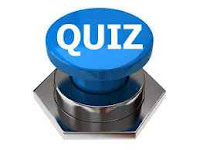Introduction to Surveying
Introduction to Surveying the art of determining the relative positions of different object on the surface of the earth by measuring the horizontal distance between andby preparing a map to any suitable scale. Definition of Surveying Objects. Chapter 1 Introduction surveying.Classifications of Surveying.
Surveying:
It is the craft of deciding the general places of a various article on the outside of the earth by estimating the flat separation among them and by setting up a guide to any reasonable scale. Along these lines, in this procedure, the estimations are taken just in the level plane.
Studying is the craft of deciding
the overall places of the various item on the outside of the earth.
By estimating the flat separations among them, and by setting up a guide to an appropriate scale. Consequently, in this control, the estimations are taken just in the even plane.
By estimating the flat separations among them, and by setting up a guide to an appropriate scale. Consequently, in this control, the estimations are taken just in the even plane.
Leveling:
Leveling is the specialty of deciding the relative vertical separation of various focuses on the outside of earth. Thus, in leveling, the estimations are taken just in the vertical plane.
Leveling is the craft of deciding the relative vertical separations of various focuses on the outside of the earth.
Accordingly, in leveling, the estimations are taken just in the vertical plane.
A. Primary [Classification]:
The state of the earth is circular. Accordingly, the surface is clearly bent. In any case, in-plane looking over the shape of the earth isn't considered. This is on the grounds that plane studying is done over a little territory, so the outside of the earth is considered as a plane. The level of precision required in this sort of studying is totally low. Plane reviewing is done on a territory of under 250km^2.
Geodetic surveying :
In geodetic looking over the ebb and flow of the earth is thought about. It is reached out over a huge region more prominent than 250km2. The line joining any two points considered as a bent line. Exceptionally refined techniques and instruments are utilized in this sort of looking over. IN this technique high exactness or precision is required.
Secondary classification:
1. Based on instrument:
2. Based on methods:
3. Engineering Map:
5. Contour Map:
Contour map to determine the capacity of a reservoir and to find the best possible routes of roads, railways, etc.
6. Geological Map:
surveyor syllabus -- Click
Surveyor Book Buy - Link
Introduction To Surveying Quiz Start :
Thank You....
Leveling is the specialty of deciding the relative vertical separation of various focuses on the outside of earth. Thus, in leveling, the estimations are taken just in the vertical plane.
Leveling is the craft of deciding the relative vertical separations of various focuses on the outside of the earth.
Accordingly, in leveling, the estimations are taken just in the vertical plane.
Types of Surveying [Classification]:
A. Primary [Classification]:
- Plane surveying
- Geodetic surveying
The state of the earth is circular. Accordingly, the surface is clearly bent. In any case, in-plane looking over the shape of the earth isn't considered. This is on the grounds that plane studying is done over a little territory, so the outside of the earth is considered as a plane. The level of precision required in this sort of studying is totally low. Plane reviewing is done on a territory of under 250km^2.
In geodetic looking over the ebb and flow of the earth is thought about. It is reached out over a huge region more prominent than 250km2. The line joining any two points considered as a bent line. Exceptionally refined techniques and instruments are utilized in this sort of looking over. IN this technique high exactness or precision is required.
Secondary classification:
1. Based on instrument:
- Chain Survey.
- Compass survey.
- Plane Table survey.
- Theodolite survey.
- Tacheometric Survey.
- Photographic survey.
2. Based on methods:
- Triangulation Survey.
- Traverse Survey.
3. Based on Objects:
- Geological survey.
- Mine survey.
- Archeological Survey.
- Military survey.
4. Based on nature of field
A. Land Survey.
B. Marine survey.
C. Astronomical survey.
USE OF SURVEYING
1. Topographical Map:
Topographical
map which shows the hills, valleys, rivers, villages town, forests, etc. of a
country.
2. Cadastral Map:
Cadastral map showing the boundaries of fields,
houses and other properties.
Building map which shows the subtleties of designing works, for example, streets , railroads, repositories, water system waterways, and so on.
4. Military Map:
Military guide indicating the street and railroad correspondences with various pieces of a nation . A guide additionally shows the distinctive vital focuses significant for the barrier of a nation.
5. Contour Map:
Contour map to determine the capacity of a reservoir and to find the best possible routes of roads, railways, etc.
6. Geological Map:
Geological
map showing areas including underground resources.
l
Introduction To Surveying watch
l
General Principle of surveying
TTo work from the entire to the part, and
To find another station by at any rate two estimations ( direct or rakish) from fixed reference focuses.
Working from whole to part.
go as to limit botches and check their total, a ton of control centers is continually settled with unfathomable precision first for the whole area to be contemplated. later on, nuances or filled in these control centers to a decently more diminutive exactness.
this basic work rule is known as "Working from whole to part".
fixing a point concerning two fixed focuses.review stations are fixed by atleast two estimations, either both direct or rakishestimations or straight and exact estimations from two control centers.
Introduction To Surveying watch
Chain Surveying -Procedure, principle --- Read
Questions and Answer:
1 What is classification of surveying?
= primary
and secondary
2 What is surveying primary classified under.
= plane
and geodetic
3 Plane surveying is done on area.
= less than 250 km2
4 Geodetic
surveying is done on area.
= more then 250 km2
5 What is
surveying secondary classification under.
= Best on instruments, methods, object, nature
of field
6 General
principle of surveying.
= whole to the part
7 The locate
a new station by at least two measurements.
= Linear or angular
8 The
walking step of a man is considered.
= 2.5ft or 80cm
9 The
mechanical device stop watch.
= passometer
10 The used
in automobiles for recording distances.
= Speedmeter
11 The
distance are directly measuredin the field.
= Chain or Tape
12 EDM is ?
= Electronic distance measurement
13 GAD is ?
= Gallium Arsenide Diode
14 Ranging
rods length is.
= 2m
15 Different
types of chains.
= 5 type
16 Metric
chain length is.
= 20 or 30m
17 Steel
band length is .
= 20 or 30m
18 Engineers
chain length is.
= 100ft
19 Gunters
chain length is.
= 66ft
20 Revenue
chain length is.
= 33ft
21 Defferent type of tape.
= 4 type
22 Cloth or Linen tape length is.
= 10 and 15m
23 Metallic tape length is.
= 15 , 20 and 30m
24 Steel tape length is.
= 50m
25 Inver tape length is.
= 100m
26 Inver tape made is.
= steel (64%) and nickel (36%)
27 Arrows length is.
= 400mm
28 Who drags the forward end of the chain .
= Leader
29 Who holds the zero end of the chain.
= Follower
30 Chain free but vision obstructed is.
= jungle area
31 Chaining obstructed but vision free is.
= pond
32 Chaining and vision both obstructed is.
= building
33 Slope correction is.
= always negative
34 Differents type of scale.
= plane and diagonal
35 Plane scale ued to units.
= two successive
36 Diagonal scale used to units.
= three successive
37 Horizontal plane is.
= surveying
38 vertical plane is.
= leveling
39 RF full form.
= Representative fraction
40 How many ranging rods are required to range
a line?
= Three ranging rods
41 The object of surveying is to prepare a
= map
42 The curvature of the earth is ignored.
= plane surveying
43 Surveying which depict the natural features
of a country is.
= Topographical surveys
44 A 20m chain is divided into
= 100 links
45 A 30m chain is divided into
= 150 links
46 One links mean the distance from
= centre to centre of middile rings
47 The end link is considered
= including the length of the handle
48 Sag correction is
= always negative
49 The difference between the are length and
chord length for a distance of 18.2 km is only
= 10cm
50 Cumulative error is
= L
surveyor syllabus -- Click
Surveyor Book Buy - Link
Introduction To Surveying Quiz Start :
coming soon
 |
| Introduction To Surveying |
Thank You....


















Kadangpintar: Online Casino - KAdang
ReplyDeleteWelcome 바카라 to deccasino Kadangpintar - the latest online casino! With over 50 slots, our online casino offers you a wide range of casino games including kadangpintar
I would like to recommend KB Surveys - ground penetrating radar gpr survey , if someone is looking for comprehensive surveying services. The company carried out a full range of measurements for me, from preparing documentation to final inventory.
ReplyDelete